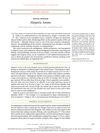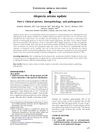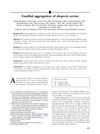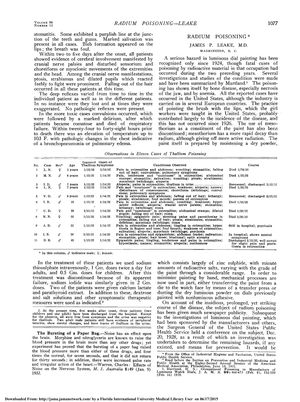TLDR Radium exposure causes severe health issues, so strict safety measures are essential.
The document "RADIUM POISONING" from March 26, 1932, details the severe health effects of radium exposure in workers, particularly those in luminous dial painting, since 1924. It reports cases of bone disease, jaw necrosis, anemia, alopecia, cranial nerve palsies, and respiratory failure, primarily due to the practice of pointing brushes with lips. Despite efforts to mitigate these hazards through improved ventilation and mechanical processes, some workers still showed signs of radium exposure, though less severe. The document emphasizes the need for stringent safety measures to prevent radium poisoning, highlighting that even low levels of exposure should be minimized to prevent long-term health effects.
701 citations,
August 2014 in “Nature medicine” Alopecia areata can be reversed by JAK inhibitors, promoting hair regrowth.
 421 citations,
April 2012 in “The New England Journal of Medicine”
421 citations,
April 2012 in “The New England Journal of Medicine” Alopecia Areata is an autoimmune condition causing hair loss with no cure and treatments that often don't work well.
 391 citations,
January 2010 in “Journal of The American Academy of Dermatology”
391 citations,
January 2010 in “Journal of The American Academy of Dermatology” Half of people with Alopecia Areata may see hair regrowth within a year without treatment, but recovery is unpredictable.
 295 citations,
January 2006 in “Journal of the American Academy of Dermatology”
295 citations,
January 2006 in “Journal of the American Academy of Dermatology” Alopecia areata, a common autoimmune hair loss condition, often runs in families.
 290 citations,
December 2017 in “Journal of The American Academy of Dermatology”
290 citations,
December 2017 in “Journal of The American Academy of Dermatology” Alopecia areata is an autoimmune condition causing hair loss, influenced by genetics, stress, and diet, and may be prevented by a high soy oil diet.
275 citations,
November 2002 in “International Journal of Dermatology” Alopecia areata mainly affects young people and has significant psychological impacts, especially in males.




